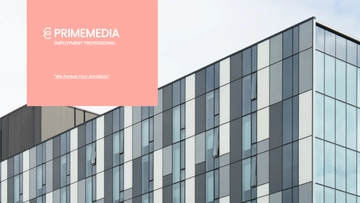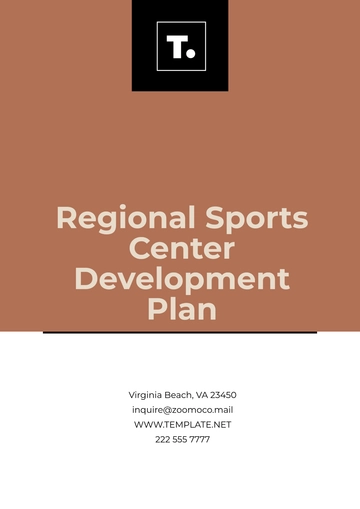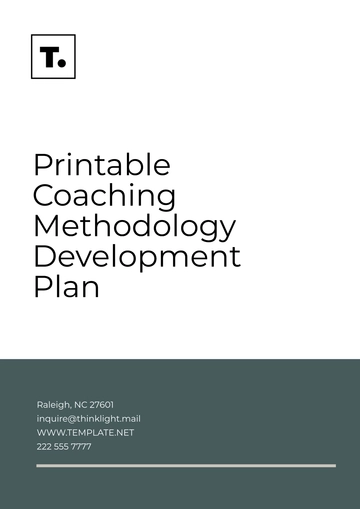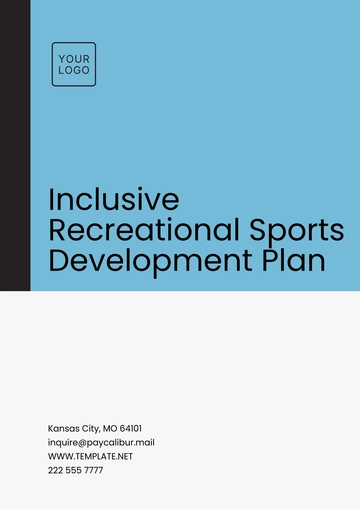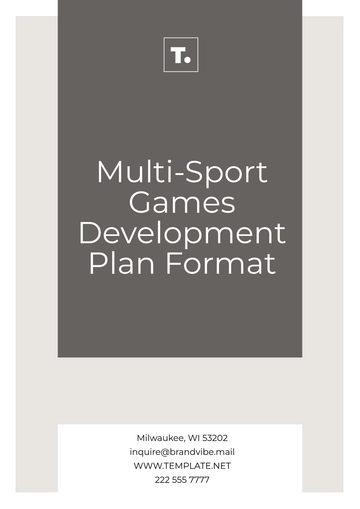Free Nursing Home Development Plan

1. Executive Summary
The objective of [Your Company Name] is to establish a premier nursing home facility that provides unparalleled care and comfort to the elderly. We aim to focus on personalized medical services, rehabilitation, and a wide range of activities tailored to the needs and preferences of our residents.
Key Highlights
Location: Strategically located in a serene, accessible suburb to cater to families seeking quality eldercare solutions.
Services: A comprehensive suite of services including 24/7 nursing care, physical therapy, social activities, and specialized dementia care.
Community Need: An identified gap in high-quality, compassionate eldercare services in the region.
2. Market Analysis
Demographic Analysis
Age Group | Percentage | Specific Needs |
|---|---|---|
65-74 | 40% | Minimal assistance, recreational activities |
75-84 | 35% | Moderate assistance, medical care, social engagement |
85+ | 25% | Extensive assistance, specialized medical care |
Competitor Analysis: [Your Company Name] has analyzed five major competitors within a 20-mile radius. Our findings indicate a gap in specialized dementia care and a general lack of personalized, resident-focused service offerings.
Market Needs: The primary needs identified include personalized care plans, modern facilities with advanced medical equipment, and a strong emphasis on mental health and social engagement.
3. Vision and Mission Statements
Vision Statement: To be the leading provider of eldercare, known for our compassion, excellence in care, and unwavering commitment to improving the quality of life for our residents.
Mission Statement: [Your Company Name]’s mission is to provide a safe, nurturing environment for the elderly, with a focus on individual health, wellness, and happiness. We aim to set new standards in eldercare through innovation, community engagement, and exceptional service.
4. Services Offered
[Your Company Name] will provide a comprehensive range of services designed to meet the physical, emotional, and social needs of our residents. Our aim is to ensure that every resident feels valued, supported, and part of a vibrant community.
Medical Care
Our on-site medical clinics will be staffed with geriatric specialists, nurses, and support staff available 24/7. Services will include regular health assessments, medication management, emergency care, and coordination with external healthcare providers as needed. Special attention will be given to preventive care, aiming to maintain the highest possible levels of health and well-being for our residents.
Recreational Activities
A dynamic schedule of activities will cater to a wide range of interests and abilities, encouraging residents to engage in social, creative, and physical activities. Examples include:
Arts and Crafts: Weekly workshops led by local artists and instructors.
Musical Entertainment: Regular performances from local musicians, choirs, and bands, along with music therapy sessions.
Fitness Classes: Yoga, tai chi, light aerobics, and walking clubs, all tailored to the abilities of our residents.
Social Clubs: Book clubs, gardening groups, cooking classes, and other interest-based groups to foster community.
Specialized Services
Memory Care Unit: A secure, specially designed unit for residents with Alzheimer's and other dementias, providing a safe environment and specialized activities to enhance quality of life.
Palliative Care: Compassionate care aimed at providing relief from the symptoms and stress of a serious illness, with a focus on improving life quality.
Rehabilitation Services: Post-surgery, stroke, or injury rehabilitation services, including physical therapy, occupational therapy, and speech-language pathology.
5. Business Model
Operational Model
[Your Company Name] will operate on a mixed-use model, offering both private pay options and accepting a variety of insurance plans. Our operational model emphasizes efficiency, high-quality care, and resident satisfaction.
Revenue Model
Service | Pricing Strategy | Notes |
|---|---|---|
Room & Board | Monthly flat rate | Includes basic services |
Specialized Care | Additional fees | Based on the care level needed |
Ancillary Services | A la carte | Physical therapy, etc. |
Sustainability Plans
The primary objective of [Your Company Name] is to accomplish financial sustainability, and in order to achieve this target, we have adopted a balanced approach. This includes a strategy where we closely monitor a combination of residents who pay privately, collaborations with various insurance organizations, and meticulous management of day-to-day operations to maintain effective control over costs. We believe such an approach will provide us with the right mix for achieving our desired financial stability.
6. Legal and Regulatory Compliance
Ensuring legal and regulatory compliance is fundamental to the operation of [Your Company Name]. This will involve a comprehensive approach to meet and exceed the standards set by healthcare regulators and local authorities.
Licensing Requirements: Detailed attention will be paid to obtaining all necessary operational licenses from the appropriate state and federal bodies. This will include licenses for healthcare provision, facility operation, and any specific requirements related to specialized services such as memory care.
Health and Safety Regulations: Adhering to the highest standards of health and safety is a cornerstone of our operation. Regular audits and inspections will ensure compliance with OSHA regulations, fire safety standards, and state-specific health codes. Our facility will also adhere to the latest guidelines for infection control and pandemic preparedness, ensuring the safety and well-being of our residents and staff.
Privacy and Data Protection: In compliance with HIPAA and other relevant privacy laws, [Your Company Name] will implement stringent policies and procedures to safeguard resident information. This will include secure electronic health records, confidentiality training for all staff, and clear protocols for data access and sharing.
7. Facility Plan
The facility plan for [Your Company Name] is designed with the dual goals of providing a comfortable, home-like environment for our residents while incorporating state-of-the-art healthcare technologies and amenities.
Location
After extensive research, the chosen location offers easy access for families, serene landscapes for resident enjoyment, and proximity to medical facilities for specialist consultations or emergencies. The site has been selected not just for its present suitability but also for potential future expansion.
Design
The architectural design emphasizes open, naturally lit spaces that foster a sense of community and ease of mobility. Special attention has been paid to accessibility, with ramps, wide corridors, and barrier-free access throughout. Each resident room will offer privacy, comfort, and a personal touch, with options for customization to make the space feel like home. Communal areas like dining halls, lounges, and gardens are designed to be welcoming and conducive to social interaction.
Technology
Cutting-edge technology will be seamlessly integrated to enhance care and lifestyle:
Healthcare Management Systems: Electronic health records (EHR) system for real-time access to resident health information, facilitating personalized care plans.
Security and Safety: Advanced security systems, including surveillance cameras and emergency call systems, to ensure resident safety around the clock.
Communication Tools: Digital platforms to keep residents and their families connected, including video calling facilities and a resident portal for updates and announcements.
8. Staffing Plan
Roles and Responsibilities
Position | Responsibilities | Required Qualifications |
|---|---|---|
Registered Nurses | Provide medical care, oversee CNAs and patient assessment | RN License |
CNAs (Certified Nursing Assistants) | Assist with daily activities, report health concerns | CNA Certification |
Physical Therapists | Develop and execute rehab programs, patient assessments | PT License |
Activity Director | Plan and implement recreational programs | Experience in recreational therapy |
Recruitment Strategy: [Your Company Name] will leverage industry-specific job boards, local healthcare training programs, and professional networks to attract qualified candidates. Competitive salary packages, benefits, and continuous professional development opportunities will be offered to retain top talent.
Training and Development: Implement an onboarding process focused on quality care, resident safety, and workplace culture. Ongoing training will include dementia care certification, emergency response preparedness, and leadership development for senior staff.
9. Marketing and Outreach
Brand Development: The brand will emphasize compassion, innovation in care, and community integration. Marketing materials will reflect these values through testimonials, resident success stories, and highlighting the state-of-the-art facilities.
Promotional Strategies: Utilize a mix of digital marketing (SEO, social media, content marketing) and traditional methods (open houses, local newspaper ads, community event sponsorships) to build brand awareness.
Community Engagement: Partner with local businesses, schools, and non-profits to host wellness events, educational seminars, and volunteer programs. This engagement will reinforce [Your Company Name]'s commitment to the community and build a strong local network.
10. Implementation Timeline
Phase | Activities | Timeline |
|---|---|---|
Planning | Market analysis, legal setup, securing financing | Months 1-6 |
Development | Land acquisition, construction, staff recruitment | Months 7-18 |
Pre-Opening | Staff training, marketing campaign, regulatory approvals | Months 19-24 |
Grand Opening | Official opening, community event | Month 25 |
11. Financial Projections
Startup Costs
Item | Cost ($) |
|---|---|
Land Acquisition | 500,000 |
Construction | 2,000,000 |
Equipment and Supplies | 300,000 |
Licensing and Legal Fees | 50,000 |
Marketing | 100,000 |
Total | 2,950,000 |
Operational Budget (Yearly)
Expense Category | Cost ($) |
|---|---|
Staff Salaries | 1,200,000 |
Utilities | 100,000 |
Maintenance | 150,000 |
Marketing | 120,000 |
Miscellaneous | 50,000 |
Total | 1,620,000 |
Revenue Projections
The project is projected to attain the break-even point by the third year. This forecasted financial stability will be achieved through a steady increase in occupancy rates and an expansion of services. Furthermore, the revenue streams for this project will encompass not only the fees from residents but also income generated from specialized care services and any additional, or ancillary, services provided.
12. Risk Management
Effective risk management is essential to safeguard the interests of our residents, staff, and stakeholders while ensuring the long-term success and sustainability of [Your Company Name]. This section outlines the primary risks identified and strategies for their mitigation.
Risk Identification and Assessment
Financial Risks:
Cost Overruns: The risk of construction, operational, or staffing costs exceeding initial budgets, potentially impacting financial stability.
Revenue Shortfalls: Risks associated with lower-than-projected occupancy rates or unforeseen reductions in payment sources (e.g., changes in insurance reimbursements).
Operational Risks:
Staff Turnover: High turnover rates can lead to operational challenges, increased costs, and a potential decline in care quality.
Healthcare Compliance: Failing to meet healthcare regulations can result in fines, legal challenges, and reputational damage.
Pandemic Outbreaks: The risk of infectious diseases spreading within the facility, impacting residents' health and operational capacity.
External Risks:
Regulatory Changes: Amendments to healthcare or eldercare regulations can necessitate unplanned operational adjustments.
Technological Disruptions: Emerging technologies could require significant investments to stay competitive or compliant.
Natural Disasters: Events such as earthquakes, floods, or fires could physically damage facilities and disrupt services.
Mitigation Strategies
Financial Risks:
Robust Financial Planning: Implement detailed budgeting with contingencies and regularly review financial performance against forecasts.
Diversified Revenue Streams: Explore multiple revenue sources, including private pay, insurance, and ancillary services to mitigate reliance on a single income source.
Operational Risks:
Comprehensive Staffing Plan: Invest in staff development, competitive compensation, and a positive workplace culture to reduce turnover rates.
Continuous Compliance Monitoring: Establish an internal compliance committee to regularly review and adapt to healthcare regulations.
Infection Control Programs: Develop and enforce strict infection control protocols, including vaccination programs, sanitation practices, and isolation procedures in case of outbreaks.
External Risks:
Regulatory Advocacy: Engage in industry associations to stay ahead of potential regulatory changes and advocate for favorable policies.
Technology Adoption: Allocate budget for technological upgrades and training, ensuring the facility remains at the forefront of care innovation.
Disaster Preparedness Plans: Implement comprehensive emergency response strategies, including evacuation plans, emergency supplies, and insurance coverage to mitigate the impact of natural disasters.
Risk Monitoring and Review:
Regular Risk Assessments: Conduct annual risk assessments to identify new risks and evaluate the effectiveness of current mitigation strategies.
Stakeholder Engagement: Involve staff, residents, and their families in risk identification and management processes to ensure comprehensive coverage and buy-in.
Adaptive Risk Management Framework: Continuously refine the risk management framework based on lessons learned, industry best practices, and evolving internal and external contexts.
By proactively identifying risks and implementing robust mitigation strategies, [Your Company Name] aims to ensure the safety, satisfaction, and well-being of its residents and staff, while securing the facility's financial health and operational efficiency.
- 100% Customizable, free editor
- Access 1 Million+ Templates, photo’s & graphics
- Download or share as a template
- Click and replace photos, graphics, text, backgrounds
- Resize, crop, AI write & more
- Access advanced editor
Shape the future of your facility with Template.net's Nursing Home Development Plan Template. Expertly designed for strategic growth, this template is fully customizable and editable with our Ai Editor Tool. Outline clear paths for expansion, quality improvement, and innovation, driving forward the mission of exceptional care. A visionary tool for nursing home leaders, exclusively from Template.net.

